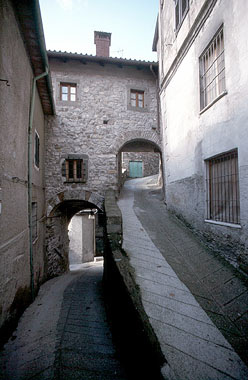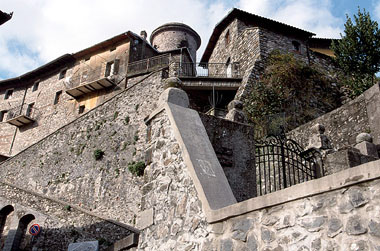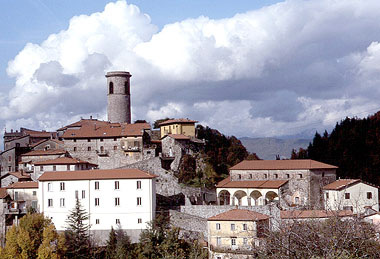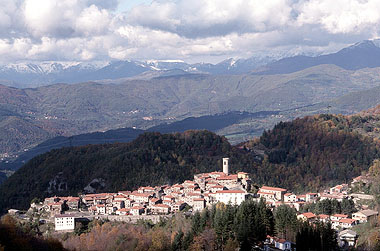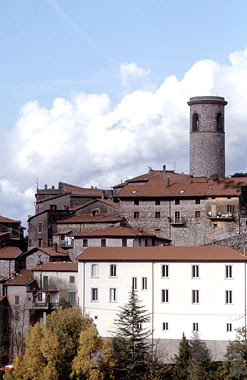Tower of Minucciano

Information
Address:
Via San Guglielmo 17-27 - 55034 - Minucciano (LU)
Foundation:
The fortified complex is medieval - XI-XII centuries
District/Location:
Minucciano
District:
Garfagnana

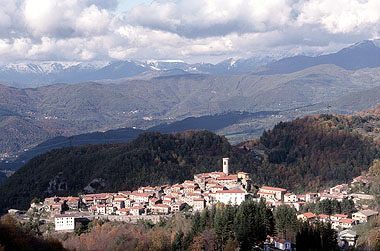
The tower and fortifications of Minucciano are perched on a high rock jutting out at the confluence of two torrents along one of the ancient routes that, departing from Piazza al Serchio, linked Garfagnana with Lunigiana through Pieve San Lorenzo.
A few stretches of the circle of walls, originally accessible through a single door, that used to protect the village still remain: also visible, in the upper part of the village, are some portions of walls belonging to the rocca and the tower. The latter represented the most inaccessible part of the complex and had a rather peculiar cylindrical form: when it lost its military function, it became the bell tower of the nearby parish church of San Michele. The rocca is made of local stone cut into blocks and arranged in neat rows following a common medieval practice. The houses of the old town centre are grouped around the fortification in concentric rings following the conformation of the ground.
A few stretches of the circle of walls, originally accessible through a single door, that used to protect the village still remain: also visible, in the upper part of the village, are some portions of walls belonging to the rocca and the tower. The latter represented the most inaccessible part of the complex and had a rather peculiar cylindrical form: when it lost its military function, it became the bell tower of the nearby parish church of San Michele. The rocca is made of local stone cut into blocks and arranged in neat rows following a common medieval practice. The houses of the old town centre are grouped around the fortification in concentric rings following the conformation of the ground.
Torre di Minucciano
It is now rather difficult to appreciate the fortifications since its walls are largely incorporated in those of private houses; in the upper part of the village the rocca and the tower above it can instead be clearly seen. Both, the latter now a bell tower, have been recently restored: the outer curtain of walls has been reinforced as well as the staircase within the tower so that this part of the fortification is now easy to visit.
No mention is made of the village before the year 1000 and ancient sources refer to it simply as Castello, sign of its strategic importance. For a long time Minucciano was an important garrison for the Republic of Lucca as it controlled a relatively remote area bordering on the Lunigiana possessions of the Malaspina family. After a period of subjection to Castruccio, Minucciano returned under Lucca and remained loyal until the middle of the XIXth century. Its layout is that of a typical fortified village with a rocca crowned by a tower, sometimes referred to as donjon, that represented the safest place of the whole complex.
Since the XVIIIth century, with the slackening of political tensions between the Dukes of Este and the Republic of Lucca, for the ancient fortress of Minucciano, as for many others, began a slow and inexorable process of decline: parts of the walls were incorporated into private buildings, others pulled down to make way for new roads or gardens; the rocca and the tower remain, significant witnesses of the villages past.
Since the XVIIIth century, with the slackening of political tensions between the Dukes of Este and the Republic of Lucca, for the ancient fortress of Minucciano, as for many others, began a slow and inexorable process of decline: parts of the walls were incorporated into private buildings, others pulled down to make way for new roads or gardens; the rocca and the tower remain, significant witnesses of the villages past.
Scopri altre attrazioni vicino a Tower of Minucciano
See allYou may also like..
See allFind more
0








